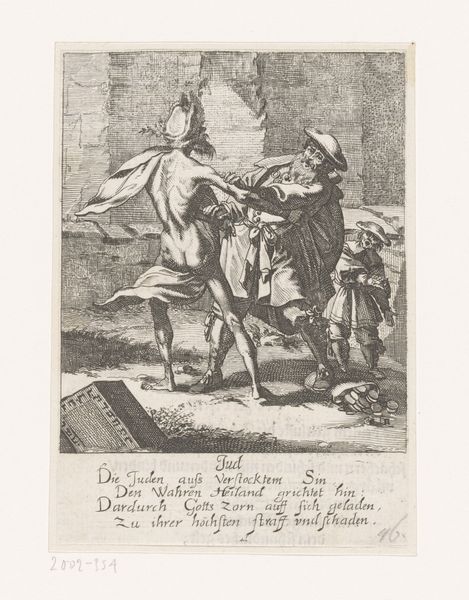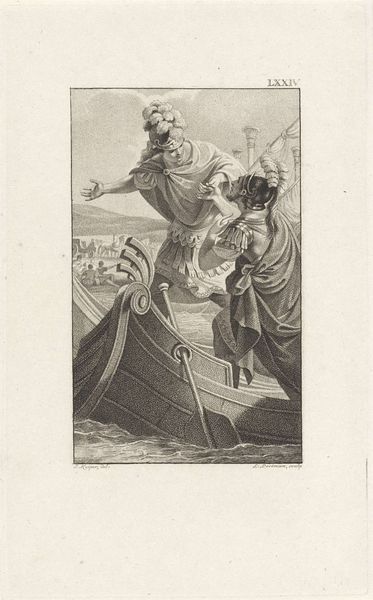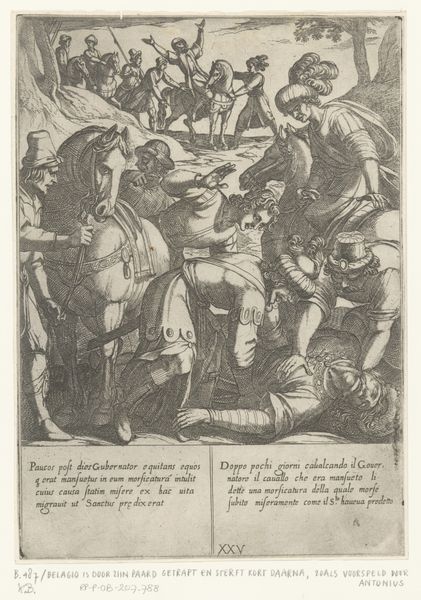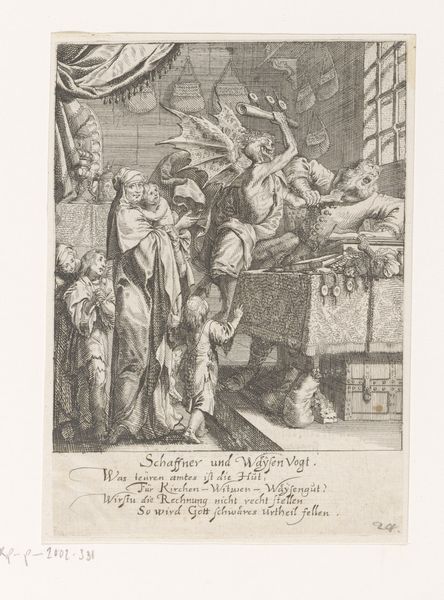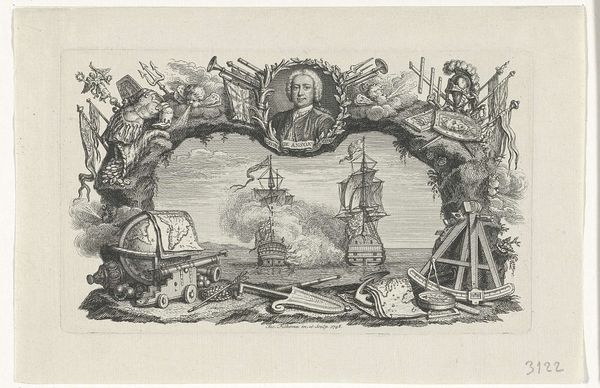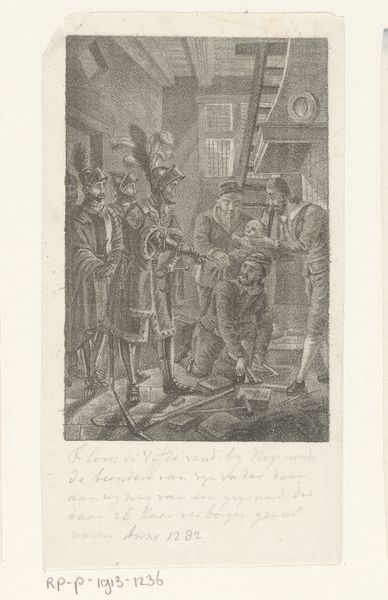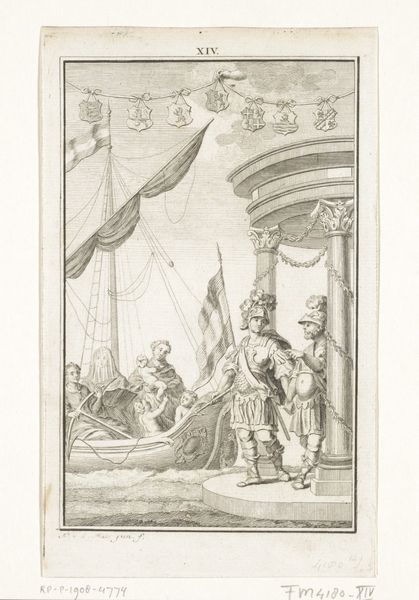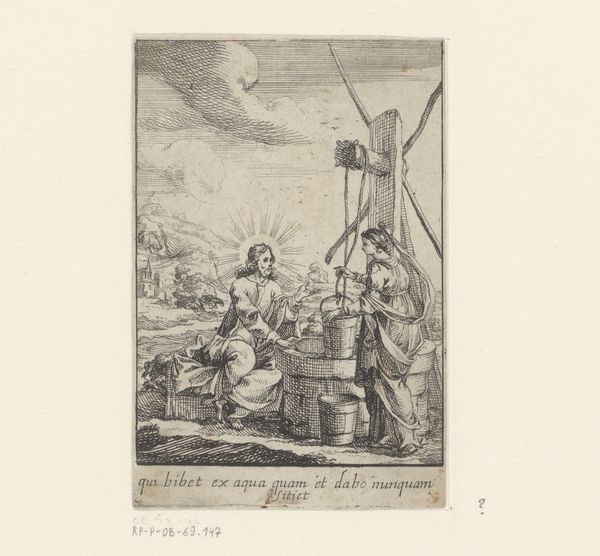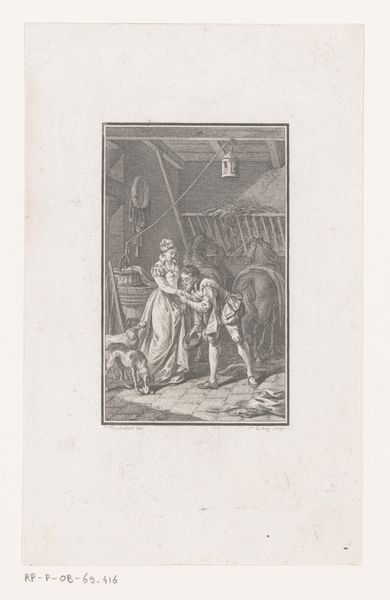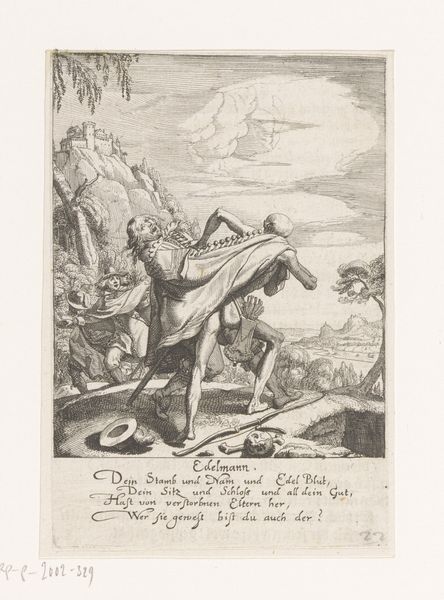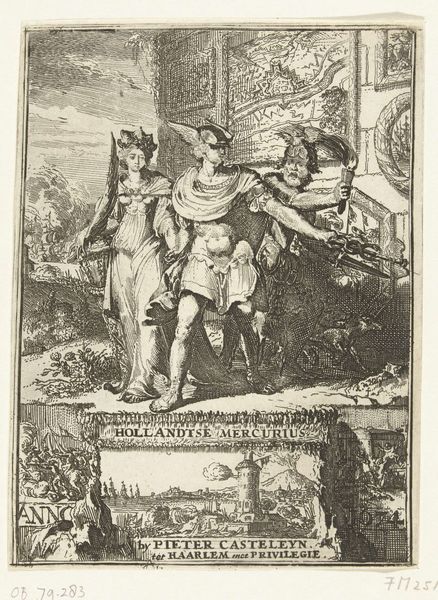
print, etching, engraving
#
allegory
#
narrative-art
#
baroque
# print
#
etching
#
landscape
#
figuration
#
form
#
vanitas
#
line
#
genre-painting
#
history-painting
#
engraving
Dimensions: height 129 mm, width 90 mm
Copyright: Rijks Museum: Open Domain
Conrad Meyer created this etching, “Koopman en de Dood,” sometime in the 17th century. The process of etching itself is crucial to understanding the image. A metal plate, likely copper, would have been coated with wax, and then the design scratched through it with a fine needle. The plate was then submerged in acid, which bit into the exposed metal, creating the lines that you see here. The linear quality of the print is directly related to this process; it allowed Meyer to create a highly detailed scene with a remarkable sense of depth. We see a merchant, accosted by Death himself, amidst the bustling trade of a port city. Barrels and bales of goods are prominent, underscoring the merchant's preoccupation with worldly wealth. Consider the labor involved in the production of goods, and their exchange. Meyer’s choice of printmaking, a relatively inexpensive medium, made this moralizing image accessible to a wide audience, prompting reflection on the transience of earthly pursuits. It’s a powerful reminder of the close relationship between art, material, and the social realities of its time.
Comments
No comments
Be the first to comment and join the conversation on the ultimate creative platform.
